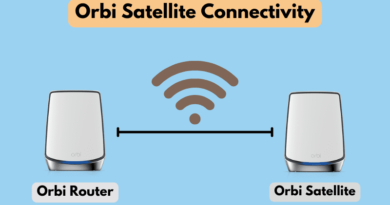A Look Into How Tech Is Helping Doctors Make Better Decisions
The healthcare industry has been rapidly evolving over the past few years. The integration of technology has played a pivotal role in this transformation. From electronic health records to telemedicine, technology is revolutionizing the way doctors make decisions, diagnose illnesses, and provide patient care. In this digital age, doctors are relying more on data-driven insights to make informed decisions and deliver personalized treatment plans. The integration of artificial intelligence, machine learning, and predictive analytics is enabling doctors to improve the accuracy and speed of diagnoses, reduce medical errors, and enhance patient outcomes. In this article, we will explore how technology is transforming doctor decision-making in the healthcare industry and what it means for the future of healthcare. Join us as we delve into the exciting possibilities that technology holds for the healthcare sector and how it is shaping the way we approach patient care.
The Role of Technology in Healthcare Decision-Making
Technology has played a critical role in transforming the healthcare industry over the past few years. From electronic health records to telemedicine, technology has revolutionized the way doctors make decisions and provide patient care. The integration of artificial intelligence, machine learning, and predictive analytics has enabled doctors to improve the accuracy and speed of diagnoses, reduce medical errors, and enhance patient outcomes.
One of the significant benefits of technology in healthcare decision-making is the ability to analyze large amounts of data. Advances in data analytics have made it possible for doctors to analyze patient data quickly and make informed decisions based on this information. For example, doctors can now use predictive analytics to identify patients who are at risk of developing a particular condition and take preventive measures to reduce the risk.
Another benefit of technology in healthcare decision-making is the ability to personalize treatment plans. Electronic health records make it possible for doctors to access patient data easily and make informed decisions about the best treatment plan for each patient. By analyzing patient data, doctors can develop personalized treatment plans that take into account a patient’s unique medical history, lifestyle, and preferences.
Technology has improved the speed and accuracy of diagnoses. With the help of artificial intelligence and machine learning, doctors can now analyze patient data quickly and accurately to make a diagnosis. This not only saves time but also reduces the risk of misdiagnosis, which can have serious consequences for patients.
Artificial Intelligence in Healthcare
Artificial intelligence (AI) has the potential to revolutionize the healthcare industry. AI can be used to analyze large amounts of patient data quickly and accurately, enabling doctors to make informed decisions and deliver personalized treatment plans. AI can also be used to develop predictive models that can identify patients who are at risk of developing a particular condition, allowing doctors to take preventive measures to reduce the risk.
With the help of AI, doctors can analyze patient data quickly and accurately to make a diagnosis. This not only saves time but also reduces the risk of misdiagnosis, which can have serious consequences for patients.
By analyzing patient data, AI can help doctors develop personalized treatment plans that take into account a patient’s unique medical history, lifestyle, and preferences. This can lead to better patient outcomes and higher patient satisfaction.
AI can be used to improve patient outcomes by identifying patients who are at risk of developing a particular condition. By taking preventive measures, doctors can reduce the risk of patients developing a particular condition, leading to better patient outcomes and reduced healthcare costs.
Wearable Technology and Patient Monitoring
Wearable technology has become increasingly popular in recent years, and it has the potential to transform the healthcare industry. Wearable devices can be used to monitor a patient’s vital signs, activity levels, and other health-related data, enabling doctors to make informed decisions and deliver personalized treatment plans.
By using wearable devices, doctors can monitor a patient’s vital signs and other health-related data without the need for the patient to visit the doctor’s office. This can be particularly useful for patients who live in remote areas or have mobility issues.
By monitoring a patient’s vital signs and other health-related data over time, doctors can identify trends and make informed decisions about the best treatment plan for the patient.
Wearable technology can be used to improve patient outcomes by identifying patients who are at risk of developing a particular condition. By taking preventive measures, doctors can reduce the risk of patients developing a particular condition, leading to better patient outcomes and reduced healthcare costs.
Telemedicine and Virtual Consultations
Telemedicine has become increasingly popular in recent years, and it has the potential to transform the healthcare industry. Telemedicine allows doctors to provide medical consultations and treatment plans to patients remotely, using video conferencing and other digital technologies.
By using video conferencing and other digital technologies, doctors can provide medical consultations to patients regardless of their location. This is an enormous benefit to those in more remote locations that have a difficult time making routine visits.
Another benefit of telemedicine is the ability to reduce healthcare costs. By providing medical consultations remotely, doctors can save time and reduce the need for patients to visit the doctor’s office. This can lead to reduced healthcare costs for both patients and healthcare providers.
Telemedicine can be used to improve patient outcomes by providing access to medical consultations and treatment plans to patients who might not have had access to these services otherwise. By providing medical consultations remotely, doctors can identify patients who are at risk of developing a particular condition and take preventive measures to reduce the risk.
Enterprise Technology Services
Enterprise technology services have the potential to transform the healthcare industry by streamlining processes and improving efficiency. Enterprise technology services include electronic health records, data analytics, and other digital technologies that can be used to improve the delivery of healthcare services.
By using electronic health records and data analytics, doctors can analyze patient data quickly and accurately to make a diagnosis. This not only saves time but also reduces the risk of misdiagnosis, which can have serious consequences for patients.
Doctors can develop personalized treatment plans that take into account a patient’s unique medical history, lifestyle, and preferences by analyzing patient data. This can lead to better patient outcomes and higher patient satisfaction.
These services can be used to improve patient outcomes by identifying patients who are at risk of developing a particular condition. By taking preventive measures, doctors can reduce the risk of patients developing a particular condition, leading to better patient outcomes and reduced healthcare costs.
The Benefits of Technology in Healthcare Decision-Making
The integration of technology has numerous benefits for the healthcare industry. By using data-driven insights to make informed decisions, doctors can improve the accuracy and speed of diagnoses, reduce medical errors, and enhance patient outcomes. Technology also allows doctors to personalize treatment plans and identify patients who are at risk of developing a particular condition, leading to better patient outcomes and reduced healthcare costs.
The Challenges of Implementing Technology in Healthcare
Implementing technology in healthcare can be challenging. One of the significant challenges is the cost of implementing new technologies. Healthcare providers must invest in new technologies, which can be expensive and time-consuming.
Another challenge is the need to train healthcare providers on how to use new technologies. Healthcare providers must be trained on how to use new technologies effectively to ensure that they are used correctly and to maximize the benefits.
There is a need to ensure that patient data is protected when using new technologies. Healthcare providers must ensure that patient data is kept secure and that patient privacy is protected when using new technologies.
The Future of Healthcare and Technology
The future of healthcare is exciting, with new technologies emerging that have the potential to transform the industry. Advances in artificial intelligence, machine learning, and predictive analytics will enable doctors to make more informed decisions and deliver personalized treatment plans. Wearable technology and telemedicine will improve access to healthcare services, particularly in remote areas. Enterprise technology services will streamline processes and improve efficiency, leading to better patient outcomes and reduced healthcare costs.
Conclusion
The integration of technology has the potential to transform the healthcare industry. By using data-driven insights to make informed decisions, doctors can improve the accuracy and speed of diagnoses, reduce medical errors, and enhance patient outcomes. Technology also allows doctors to personalize treatment plans and identify patients who are at risk of developing a particular condition, leading to better patient outcomes and reduced healthcare costs. While there are challenges to implementing new technologies in healthcare, the benefits far outweigh the costs. The future of healthcare is exciting, and we should embrace the potential of technology to transform the industry.




